Teaching a child to read the clock is not an easy task, but it can be done easily. It is only necessary to know the correct methods and rules of this painstaking process, which are outlined in this article.
Growing up, the child begins to actively be interested in many questions. Sometimes parents get into a stupor when it is necessary to explain to the child what 5 minutes is, when an hour will pass and how today is different from tomorrow.
It would be very easy to say that a minute is a measure of time, but an inquisitive child will ask you to clarify this new word for him. How to explain to a child what is time and how to calculate it correctly we analyze in detail in this article.
How to explain time to a child how to teach a child to understand the clock?
To small children Difficulty understanding abstract concepts, that is, they love to touch, touch, bite everything. In order for the baby to begin with it was clear how time is measured, you need to introduce him to the clock.
The study of the clock should be gradual and necessarily visual
This familiarization process can be conditionally divided into several stages:
- Take every possible clock you can find in the house - it can be manual, table and large wall clocks - to start look at the difference, find the differences. It will be good if you have electronic and hourglasses so that the child can clearly see their diversity.
- After the child has a little understanding with appearance, pay attention to technical nuances- show that there is a large hand, a small one and a second. Try to explain which arrow is responsible for what and watch how they move
- Can look at pictures of clocks in magazines and books. Find funny poems about watches, and while reading them, you can simultaneously consider the watches you have at home
- Take your child to shops where watches are sold, show their diversity. A cuckoo clock or an old clock with a loud “bom” sound can especially attract the attention of a child.
 Show your child how different clocks are and how they function.
Show your child how different clocks are and how they function. When you explain the baby about the device itself, you can move on to remembering the time. For this you can use these options:
- Tell the child what time do you get up, at the same time say: “Today we get up at seven in the morning” and show the pre-translated time on the clock when the big hand is at twelve, and the small one is at seven
- Show your child what time he eats, how much time you spent on a walk when dad comes home from work. The kid will be interested translate the arrows yourself and show different times - for this you can purchase a toy clock or an interactive whiteboard
- When you go for a walk or go for tea, Focus your child's attention on what time it is. After you arrive, count by the minute how much time has passed
- Set a timer and try to do something– jump, drink water or watch your favorite clip. After the timer has counted down, discuss with your child whether you managed to do your plan for a certain period of time
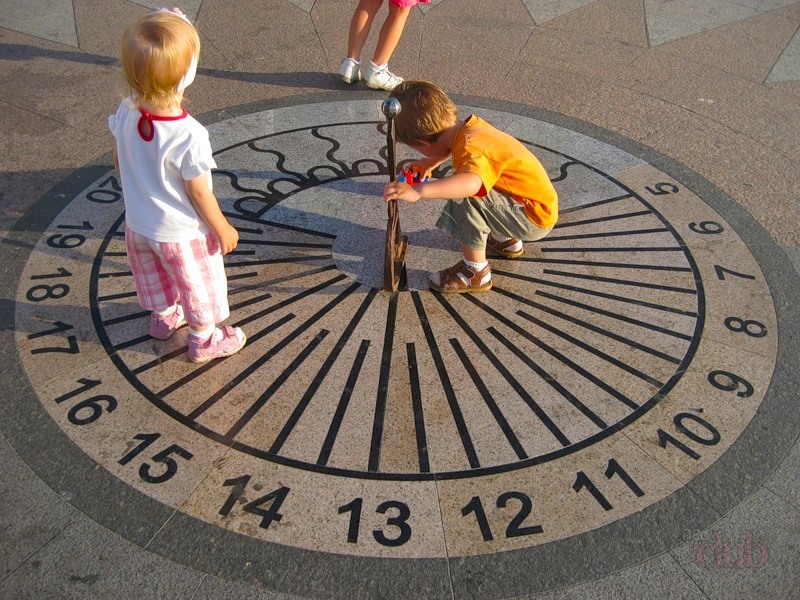 Let your child explore the watch and provide answers to any questions
Let your child explore the watch and provide answers to any questions - Take hourglasses, electronic and clocks with arrows - turn on your favorite music and watch all the changes in this watch. Compare whether 1, 2, 5, 10 minutes passed the same way on them
- First time try to do everything on time- Brush your teeth for 3 minutes, dress for 5-10 minutes. So the child will not only learn to understand the clock, but will also be more organized
- If you see that a child does not want to study the clock and does not show any interest in them - do not insist. It is better to wait or choose a fun game form of learning.
Child must learn to understand by the clock and even if at first the training will be difficult - over time, the baby will definitely master the necessary skills and will successfully apply them in practice.
Video: Child and clock
How to teach a child to understand time on a clock with arrows?
Be prepared for the fact that at first the child will be quite difficult comprehend the peculiarities of timing. The simpler and more accessible you will be able to explain to the child the principles of this abstract process, the faster and more efficiently he will learn new knowledge.
Often children do not understand how to distinguish between such a numbering system as hour field from 1 to 12 and minute field, which is divided into 60 minutes.
Before studying time directly, it is necessary to update the child's knowledge of numbers:
- Learn number count- if a child cannot count up to 60, then it will be very difficult for him to understand by the clock
- Multiply by 5- in order for the child to understand the minutes, not counting them by minute marks, it is desirable that he knows how to add and multiply. This knowledge will help you understand that 5, 10, 15 minutes have passed and so on. Besides, in Everyday life we rarely use counts like 7, 13 minutes, etc., but try to round up
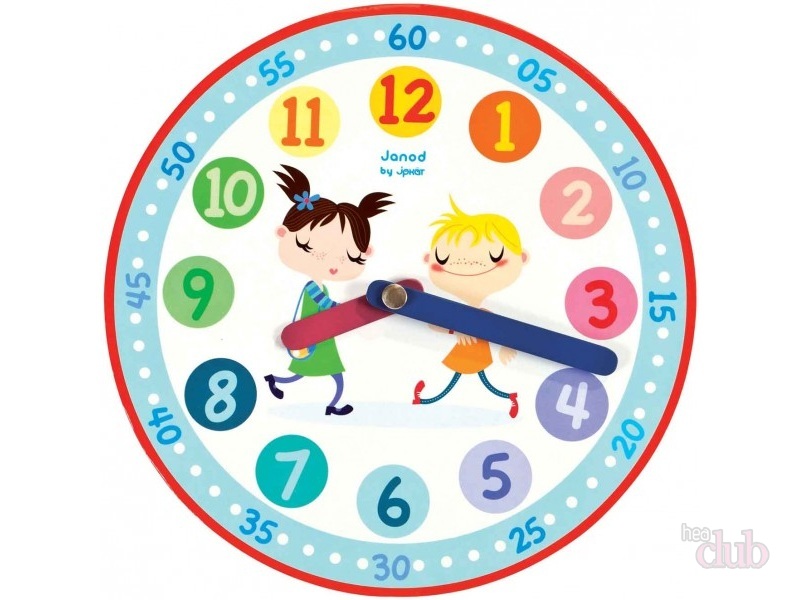 Children have a hard time understanding abstract concepts - illustrate your stories as colorfully as possible
Children have a hard time understanding abstract concepts - illustrate your stories as colorfully as possible - It is better teach a child on a big clock, the dial of which does not have a glass coating - so the child will more clearly see the time every minute, and the absence of glass eliminates the possibility of injury, and also allows the child to translate time with his fingers
- in detail explain to your child the difference between a big and a small arrow- first study the time together, then say, let the baby name the time himself, and you will slowly move the hands to the right hours and minutes
- Examine the minute hand- look at the movement of the hand in great detail by minutes, also note that when the minute hand passes the circle, the hour hand will move one digit forward. Be sure to draw the baby's attention to these nuances, if necessary, repeat what was said several times, ask questions that will check the understanding of the child
- draw a clock- in an album or notebook, draw a lot of round, square, triangular clocks and let the child paint them. After that, tell the child the time, and let him draw the arrows on his watch - this fun activity do not leave the child indifferent
- It would be a good idea write digital time next to the painted clock. So the child will learn everything at once - not only the clock, but also repeat the numbers
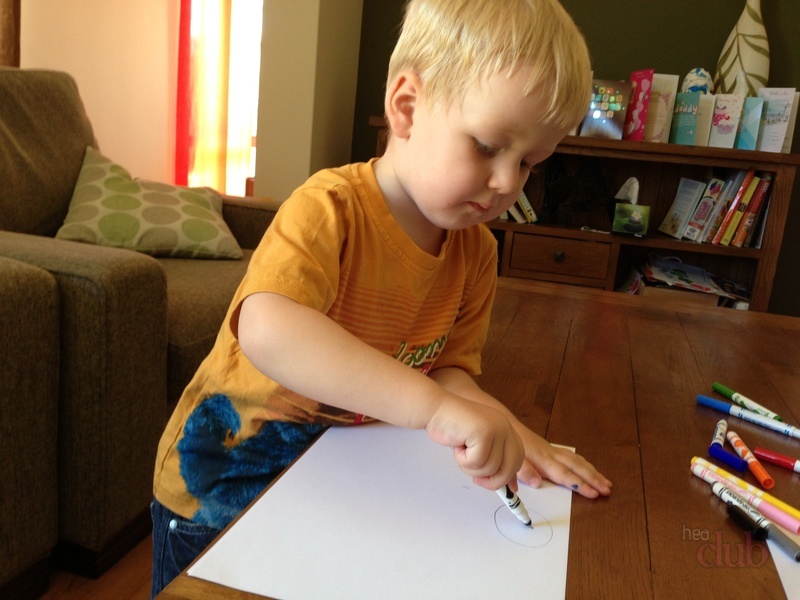 Let the child draw a clock, and you will give the task to depict any time
Let the child draw a clock, and you will give the task to depict any time try do not burden the child too much information at once. Dosed and game form the kid will quickly remember where the arrow is, and what each of them means.
Teach baby time: game
A game- one of the favorite activities of children, which performs an important function - allows you to know the world. In a playful way, you can learn time with your child in an interesting way - this will help him quickly and fun to learn how the clock works.
Exist many options interactive games for various gadgets that help in the study of time - these are programs for the smallest with different tasks, game simulators and even educational cartoons
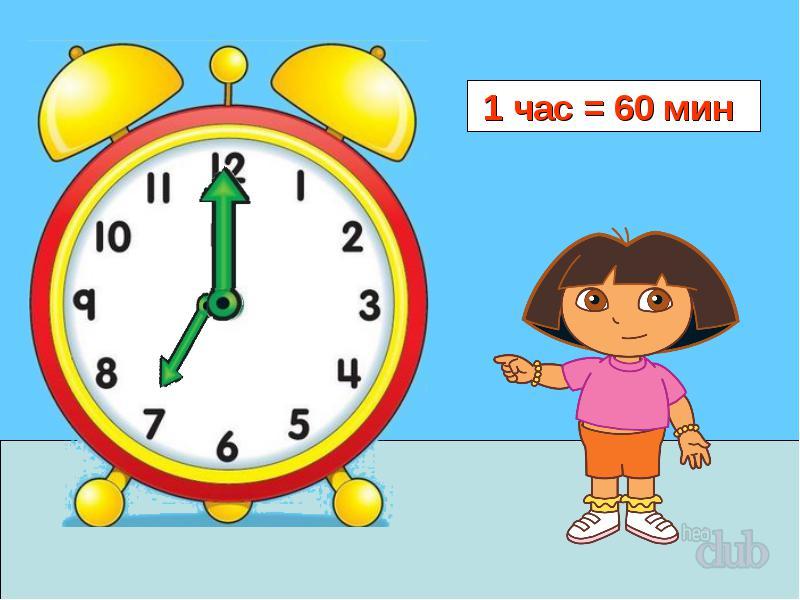 Teach your child to understand the clock in a playful way, and if you see that there is no strong interest in the clock yet, temporarily postpone learning
Teach your child to understand the clock in a playful way, and if you see that there is no strong interest in the clock yet, temporarily postpone learning As an interesting game form of learning time, you can make up a time schedule with your child:
- Use a large poster and colored markers or pencils
- Draw a big clock, and next to the arrows indicate the time with numbers.
- In the intervals between hours, draw the obligatory activities of the child
- For example, you will need to draw such mandatory items as morning awakening, breakfast, daytime sleep, lunch, dinner and night sleep
- Display a poster in a child's room
Between these obligatory points, which the child performs every day, add arbitrary options for the day spent: walking, watching cartoons, going to grandma, shopping and meeting friends. Be sure to tell your child what you need to follow in order to be in time everywhere otherwise, grandma's pies will get cold, and your friends will be upset if you are late.
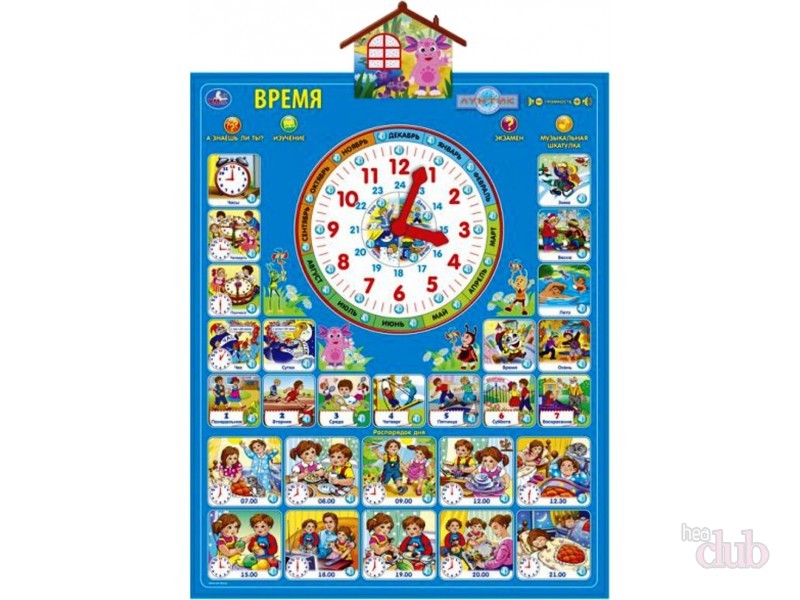 Buy a poster with a clock whose hands can be translated - such a game will quickly teach a child to determine the correct time
Buy a poster with a clock whose hands can be translated - such a game will quickly teach a child to determine the correct time Try to plan everything according to this poster - draw it colorful and fun so that when you wake up, your child’s eyes will surely fall on the wall with a masterpiece of your joint creativity.
- In a playful way, mono teach a child control time: give the child tasks, mark the time and watch them complete
- It is desirable that the execution time game taskwas a little more than required so that the child is always happy that he completes tasks ahead of schedule
- Online games a lot was invented to study the clock, the main thing is to control that the child does not spend too much time at the tablet or computer, since it hurts your eyesight
 Read poems and fairy tales about hours
Read poems and fairy tales about hours - Find a book with funny poems about hours and reading the lines to the child, ask him to look for the time that is spoken of in the verses. This fun activity has both an educational touch and a good way to brighten up the time spent.
- Engage with your child and spend as much time together as possible – in the early years the foundations of all elementary knowledge are laid about the world
- And it is mom and dad, as the closest and closest people for the crumbs, who should help the child to learn previously unknown things and processes.
How to teach a child time by the clock: a simulator?
In a variety of games for learning the clock, you need to choose the best option for your child. It is of great benefit online game for attentiveness, which helps to study the clock - time simulator.
The simplest simulator will help train your memory and study the clock. The principle of the task very simple: in one corner of the screen there is a clock on which, using the mouse, you need to set the correct time, which is indicated on the clock in the opposite corner. For each correct answer, a a certain number of points.
 Simulators will help well to teach the child to watch, but the time in front of the computer should be strictly dosed
Simulators will help well to teach the child to watch, but the time in front of the computer should be strictly dosed - The more completed tasks behind, the more difficult the levels of the game become. At the last levels task clock starts to disappear- first, a clock appears with a set time, then it disappears and a clock is displayed on the screen, which the child will need to “start” himself. Thus, a child who is already a little oriented in time, learn to remember it
- An interesting option for online simulators are games using favorite cartoon characters. For this, a game was invented in which the heroes are in a hurry, on some business, and a window with a clock is shown on top. So the child understands that his favorite doll or spiderman they do everything by the clock
- You can also train your child without using computer games. For example, you can say that tomorrow at a certain time you will go to playground while showing him the time on the clock. Have the child count down different periods days how many hours are left before this anticipated event
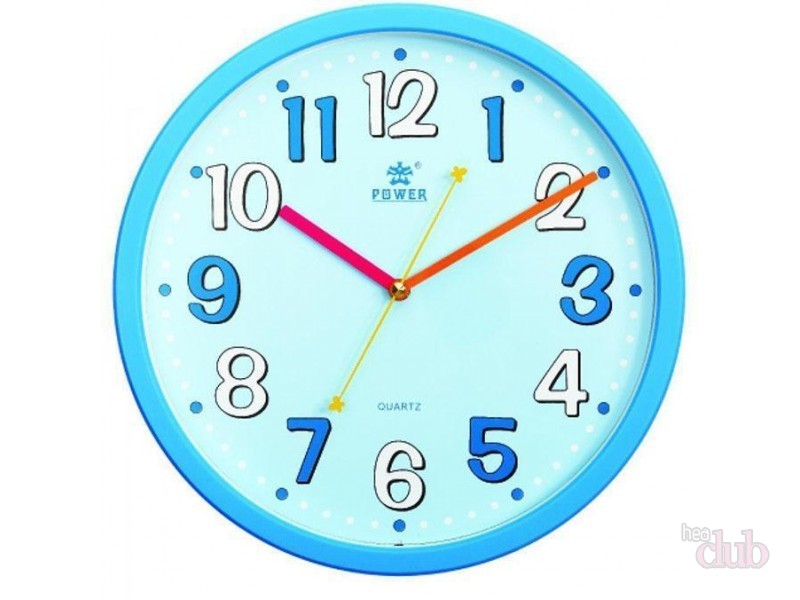 It is better to buy a children's watch for a child - it is safe, and their study is much more interesting for the baby
It is better to buy a children's watch for a child - it is safe, and their study is much more interesting for the baby invent only interesting plans- a walk to the playground or a trip to the zoo. So the child will wait for this event and keep track of time.
Thus, there are many options for familiarizing the time with the child - use interesting game methods, and your baby will definitely remember all the minutes and hours.
How to teach a child the seasons?
- The next step in the child's knowledge of the world will be learning the seasons. When you have already studied the score and time well by the clock, you can proceed to this stage. Don't rush to learn everything at once
- Otherwise, the baby will form porridge in the head from an excess of information, and he will not remember thoroughly either the basic functioning of the clock or the seasons
- If the child has already studied the clock, then he knows that in hour has 60 minutes and there are 24 hours in a day. Now he will have to remember one more numerical value - in a month 30 or 31 days, and in a year 12 months
- It’s very good to start with the child outside and explain to him what time is it now. Look around, explain to him when the grass is green, when it snows, and when the leaves on the trees turn yellow.
 Seasons
Seasons For a long time do not delay learning the seasons- because you won't wait three months to move on to the next season - use a photo album or use digital images.
- tell the child what is remarkable about each season. Convey to him the idea that each season is beautiful and unique in its own way. Let the kid try to tell about what do people do in each period
- Help explain the seasons flip calendars. Be sure to depict the time of year on them so that the child not only listens to your story, but also sees the features of a particular time. visually
- Every day you will tear off a sheet of the calendar with your child and look at the picture where you will see nature - explain to the child through it, what season is it now and cross out another day on the calendar - so the baby will understand when the month ends
 Illustrate your story about the seasons
Illustrate your story about the seasons Think of important dates for the child so that he learns on his own navigate the calendar and seasons. Say it's his birthday in a month New Year, women's day, Easter) and he will be given a lot of gifts or in the summer you will go to the sea. So the baby will count when the promised days come.
Teach with your child not only the seasons, but also the name of the months. Tell him that there are three months in one season, and only four such seasons. Gradually give him all the information, and do not tell everything in one day.
 Draw the seasons with your child
Draw the seasons with your child - When walking in a playful way, ask the child What day, month and season is it today. And if you see that new information the child has learned, then start learning with him the following
- If you do not try to tell your child about everything at once, then over time with regular repetition, Your baby will already understand with might and main not only by the clock, but will also tell you the name all days of the week and months
- The main thing is to understand that a child's brain is not a computer, do not rush to study something by overloading the baby with information - everything must be done gradually and on time, reinforcing and repeating the studied material
Video: Learning time by the clock with Luntik
Game "Clock"
Game "Clock" for children is aimed at concentrating the child's attention on the game clock for as long as possible and thus facilitating parental work. After all, to teach a baby to navigate the clock correctly, in fact, for parents is a whole art. Moms and dads have to devote enough of their time to explain the same designation ten times.
Game clock online- an excellent training of memory and attention, and, most importantly, you can turn it on at any time. All this is very convenient. When the kid is already used to this game, he will be able to play it on his own, as well as put his knowledge into practice with the usual real clock.
It is worth noting that determining time by clock- is not given to the child immediately, but in no case should you despair. Gradually, your efforts will pay off.
Time plays very important role in people's lives, which is why understanding the clock mommy and daddy should teach children with early years. As the saying goes, the sooner the better. Your attention is invited game "Clock", which will help to comfortably and in a playful way explain to the child the basics of determining the time, because everyone knows that the kids are clearer when they are explained everything they need in a color game representation.
So, studying time together, and, most importantly, with desire and cheerful mood.
The first round of the game includes the task: "Correctly place the numbers and arrows on the dial." There is a dial in the middle of the screen, and signs with arrows and numbers are scattered around it. There is also a small hint, figures with numbers and arrows are painted in different bright colors, and the middle of the dial is made in the form of a rainbow sector, each specific color the plate fits its sector on the clock, in accordance with the cell where you want to put the plate. It should be noted that the shape of the plates is also different. What is all this done for? Everything is very simple, it is easier for a child to remember such correspondences - shape - color. After all the numbers and arrows are placed correctly, a cheerful little man appears on the screen - a clock, which notifies that everything is done correctly.
Learn to tell the time by the clock, we get into the second round, where a row of four bright men in hats with a sad dial instead of a face is presented to your attention. In the second block of tasks, you must correctly set the time on the clock. Scattered below the little men are arrows indicating a specific time that must be inserted into suitable dials. After the arrows are chosen correctly, the little man smiles. After correct execution of the entire task, a cheerful little man - a clock - also appears on the screen.
In the third round, it is necessary to set the time on the little men - the clock is the opposite, that is, the plates with the time are given: "8 hours", "12 hours", "3 hours", "5 hours", and also empty plates under the clock. The task is to install the time plates in empty plates, initially determining the time on the little man.
The fourth stage of tasks asks the kid to determine which of the two little men - the watch is now eight o'clock.
Next comes the fifth round, which already consists of three little men, and it is necessary to determine eleven hours.
The sixth stage includes 4 little men, and two hours must be correctly indicated. Further, the baby will already have to make a difficult choice and think carefully, because in the next block of tasks, as many as five hours are already presented to attention, and it is necessary to choose the right time indicating three hours.
At the last stage, colored clocks are offered, with the help of which you can independently train with your child by clicking on the signs: “+ 1 h”, “- 1 h”, “+ 5 m”, “-5 m”. With these keys, you can set any time on the clock. Very handy for both parents and kids. On the watch, you can practice teaching your child what time he needs to go to bed, eat, and so on.
All parents are interested in the question, and When is it time to start teaching child time? Let's start with the fact that by the age of two or three, kids know what a watch is and why they are needed in everyday life. And they know, because you have to explain to them at this age the need for a watch. So, the main answer to the question is that it takes no earlier than three years to start learning with a baby for hours. Why? Because, by the age of three, a child should already be able to count quite well. Up to three years, you can learn to determine the time of year and day. The most important advice for parents is that before starting training, it is necessary to explain to the baby in an accessible, simple language what types of arrows are (large, small), focus on the fact that the small arrow makes the big one move, and so on. The biggest and first difficulty will be in the child not understanding the fact why when the arrow points to the division two, it means ten minutes.
Time is an abstract concept, because it is impossible to wrap your arms around it or just see it, moreover, the flow of time in different situations can either slow down or, on the contrary, fly headlong. And if even some older people have problems with a sense of time, then what can be expected from small children. But sometime you need to start teaching your baby to understand time, to understand time by the clock in order to plan personal time: for rest, study,. Where to start, at what age, and most importantly, how to teach a child to understand time by the clock - let's try to figure it out together.
When can you introduce a watch to your child?
Even from infancy, the child feels the passage of time: at first, he gets used to the regimen and feels the change of day and night. Having become a little older, he freely appeals with the concepts of day, night, evening and morning, and after a short period of time, it will not be a problem for him to tell what the seasons are, what month or day of the week it is. So, gradually the child comes to a very important point, namely - acquaintance with the clock.
AT modern world watches with a dial have practically disappeared from our lives, and they have been replaced by electronic numbers, so it has become even more difficult to teach a child the concept of time by a clock with an arrow. One of the parents will ask: “So, maybe you shouldn’t bother with the dial and immediately start working with electronic mechanisms?”
The answer is negative, because only by understanding the principle of operation of a mechanical watch, the child realizes how time runs, what a second, minute, hour is, and besides, it will be much easier for him to do math by adding up time intervals. Looking at the running arrows, the child will also learn some philosophical concepts, such as the cyclical nature of time and the fact that lost time cannot be returned. And to retrain a child to perceive time on an electronic scoreboard, then it’s not so difficult.
Psychologists and specialists in the field of educating preschoolers advise simulating situations to familiarize the baby with the clock, starting approximately with 6 years of age . But this does not mean at all that early stages the child should not be shown a mechanical watch, on the contrary, the more often the baby encounters these devices, the better. And parents should not easily show the clock, but also focus on them with their voice (in 5 minutes we will go for a walk; we will heat the milk in the microwave for 2 minutes; we must get up at 7 in the morning so as not to be late for the kindergarten).
So, involuntarily, the child will begin to wonder how parents determine by this thing when the cartoons begin. When it matures, you can begin to learn this complex and such a necessary concept as time.
It is not enough for kids to see the dial, they need to feel the passage of time. To do this, the child can be offered in a playful way to draw as many circles as possible on a piece of paper in a certain period of time, for example, in one minute. Then ask to repeat the procedure, but increase the duration of the task to two minutes. Compare the results. It is important that the child himself monitor the situation, you can use the arrows on the dial or hourglass.
The first basics of the study of time
Before starting training, you need to check the child’s elementary knowledge of counting, because if he studies numbers in the course of training, this will not only drag on for a long period, but will also discourage him from all hunting.
Parents and child psychologists agree that abstract concepts are the hardest things to explain to toddlers. To teach to understand time is not always easy even for a student elementary school not to mention children younger age. But meanwhile, this is a necessary practical skill, and everyone will have to master it. Especially for you, dear parents, our article is about how to teach a child to understand the time by the clock.
Formation of the concept of time
At normal development a child from infancy notices the change of day and night. You will be surprised, but even very little ones are really aware of the daily routine. Small child easily learns to fall asleep and wake up at about the same time. At the same time, the baby still cannot understand that it is supposed to go to bed at 21:00, he just feels the desire to sleep.
After about the first birthday of a child, you can begin to unobtrusively introduce the concept of time. Use in everyday speech the designations: "morning", "day", "evening" and "night". Toddlers over two years old can be told about the days of the week.
How to teach a child to understand time without difficulty? With preschoolers, you can safely make plans for the day. Start by defining the main activities separately for the morning, afternoon and evening. If parents more often in conversations with the child indicate some time intervals: “let's go for a walk in two hours” or “you have to clean up in 10 minutes” - the baby will remember these words very soon. But do not forget that because of the abstractness of the concept, knowing the names of the units of its measurement alone will not teach you to feel time.
When is the right time to get acquainted with the clock?
Teachers advise starting classes with watches only when the child knows the numbers well enough and knows how to count. The approximate age for a visual acquaintance with the passage of time is 6 years. Before thinking about how to teach a child to understand time by the clock, check his knowledge. To learn a mechanical watch, your baby needs to be able to count to at least 100 and perform mathematical operations such as addition and subtraction. Also, the child should not confuse the numbers. It is very good if the baby knows what a half, a quarter is, and freely operates with the temporary concepts of "before" and "after".
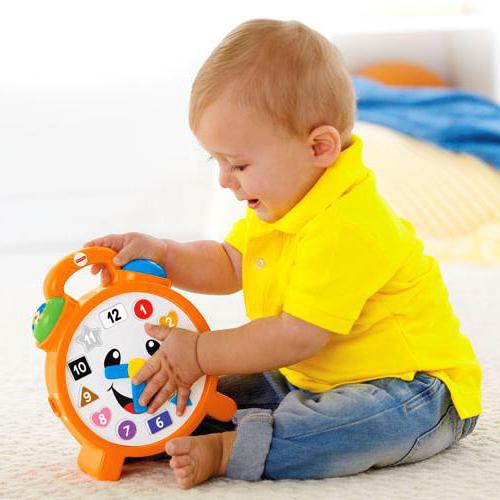
Theoretically, it is possible to acquaint a child with a watch earlier, in ages 4-5 years. Will be enough short stories about the division of the dial, the course of the hour hand and the basic principles of determining time. Just do not demand from the baby that he immediately learns to call the exact time with minutes or perform exercises designed for first graders. Conduct classes unobtrusively and in a playful way.
Mechanical and electronic watches
In our age of high technology, traditional clockwork with a dial and hands is not available in every home. A logical question arises: “Should a child be taught to understand time using a mechanical watch at all?” The answer is unequivocally affirmative. Only a classic watch with a dial will help you understand the passage of time and clearly demonstrate the number of hours in a day. Don't worry, over time you will easily explain how to understand what time it is on electronic displays. And it will be much easier to do this if the child is already familiar with classic watches. Be sure to purchase a wall-mounted timer with a dial. A great idea is to additionally give your child a personal beautiful wrist classic watch. Also you will need visual material for learning and games.
We make watches with our own hands
How to teach a child to understand time by the clock, you ask? It is very useful for learning this wisdom to use a toy clock. You can buy them in the toy department or make your own. Take on the manufacture of this craft with your child. Cut out a large dial from thick cardboard. Mark it like a real clock, you can optionally add decorative decorations to the background. Cut out two arrows from cardboard of a contrasting color, it is important that they differ in length and width. Attach them to the watch face with a button. Fix the structure in such a way that the arrows move easily.

In the process of work, explain to the child the basic principles of the real clock, if you have not talked about it before. In order to successfully interact with this device, you should know that each hour consists of 60 minutes, and the day consists of 24 hours.
The first acquaintance with the clock
Where to start learning? During the first lesson on the passage of time, tell your child about the division of the clock face and the hands. Set the minute hand to 12 and show “even hours” (1:00, 2:00, etc.). It will be difficult for a child to immediately realize the passage of time, reinforce your story with associations that are understandable to him. For example, remind him that 3:00 is lunch time and his favorite cartoons start at 5:00. Ask the child to independently set some time within the "even hours". Having achieved success at this stage, you can safely move on to the next. Explain what the minute hand does full circle for 1 hour. Try to set different times and ask the child to determine it.

Tell me what time is it?
In order to teach a child to determine the time by the clock, it is necessary to regularly draw his attention to the dial. We hope you already have a classic chronometer hanging in your living room. In addition to regular “lessons,” make a habit of casually asking, “What time is it?” - or ask: "Notice 10 minutes." In no case do not scold the child for mistakes and do not be lazy to once again repeat the basics of hourly literacy with him.
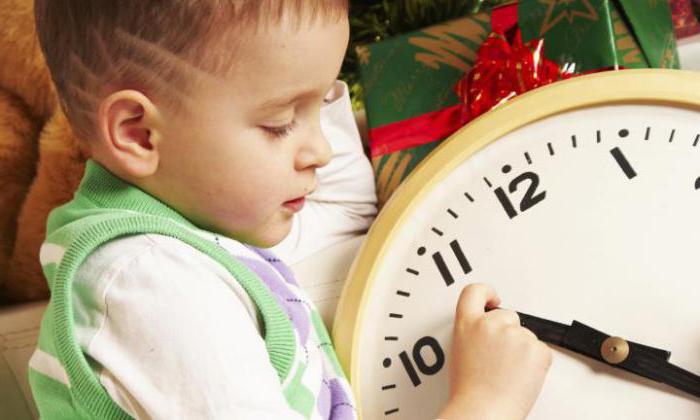
How to teach a child to understand the time by the clock during thematic classes? Take the toy dial. Ask your child to set a specific time. If the child counts well, you can complicate the task. Offer to show where the arrows will be after 10, 15, 20 minutes from the set time.
Making a schedule for the day
How to teach a child to understand the time by the clock? Playing in such a difficult matter can help to achieve incredible success. Doubt? Check it out in person. It's time to improve your homemade timing aid. Cut out with your child thick paper small cards. Choose a main character and on each paper square draw a specific moment from his day. Let it be a funny man fairy tale character or some cute animal. Connect your imagination and try to come up with a case for every hour. Let the hero brush his teeth on one card, walk on the other, have lunch on the third. As soon as the set of pictures is ready, you can start playing. Set the time on the dial, and let the child select the appropriate picture.
The second version of the game is to draw your own daily routine. In the evening or in the morning, spread the cards around the clock face, planning the sequence of actions for the day. It is advisable to somehow fix the pictures and check yourself during the day, not forgetting to move the arrows.
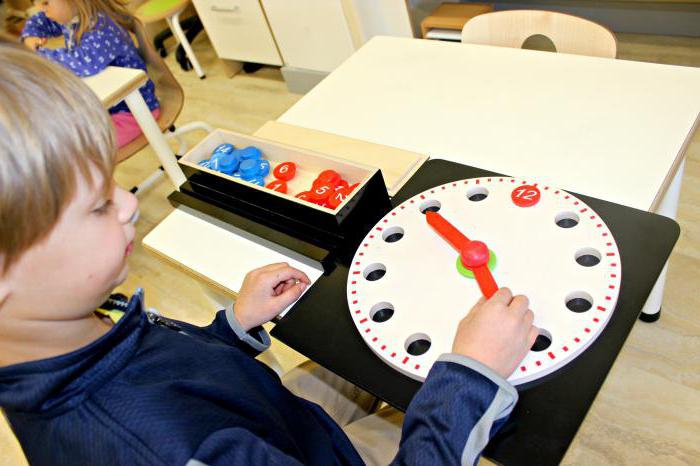
quarter and half
In use for classic watches, it is difficult to do without such concepts as “a quarter of an hour” or “half an hour”. Once your little one is familiar enough with the dial, hands, and numbers, it's time to explain these conventional units of time as well. How to teach a child to use a clock and understand time divided into halves and quarters of an hour? Remember that children perceive any explanation best when combining audio and graphic presentation of information. Draw several clock faces on a piece of paper. Let the clock show 15 minutes on one of them, and 30 on the other. For clarity, you can shade the segments from the number 12 to the one where the arrow stopped. Explain to your child the meaning of such common expressions as “twenty minutes to one” or “fifteen minutes to.”
It is better to introduce a child to any new global topic in the format of daily mini-lessons. Do not demand school discipline from the kid, it is better to unobtrusively invite him to play with the clock. If the child is not in the mood or the activity is not productive, end earlier than planned. Remember: learning to read, write, or watch is not productive if it becomes an unpleasant chore. Most helpful advice about how to teach a child to understand by the clock - to maintain interest in this topic. Try to talk about the time regularly. Tell about the types of clocks, show a stopwatch. Teach your child to feel the time and invent your own units. For example, you can remind your baby that the walk is 1,5 hour, and his favorite cartoon - 15 minutes.
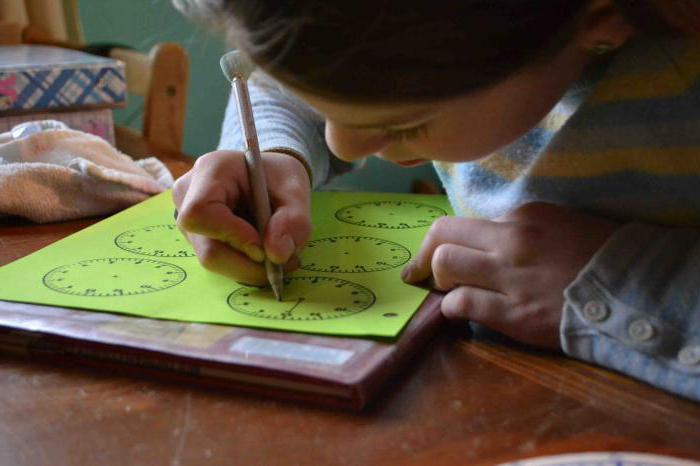
How to teach a child to determine the time by the clock and consolidate the result?
In order to qualitatively consolidate new knowledge, they need to be regularly applied in practice. Let your child keep track of time on their own and explain to them how important it is to be punctual. Let the baby remind you from time to time what time you need to leave the house. Together, you can track the duration of some processes. Such an activity is sure to captivate the child. Offer to record by the clock how long the food is being prepared, the bath is being taken, the TV show is on. This simple exercise is great for learning to feel the time. Very soon, your baby will learn to plan his day on his own and, looking at the clock, check with the implementation of this plan. After all, knowing that the process of getting ready for a walk lasts 10 minutes, he will be able to put away the toys in time and prepare for the walk.
We hope that our tips on how to teach your child time on the clock will help and be useful.
